Summit Mountaineering-Level Peaks, No Experience Needed, at These Resorts This Summer

(Photo: Courtesy of Telluride Ski Resort)
“Via what?”
That’s the common reaction from folks hearing for the first time about via ferrata climbing routes, the ski-resort attraction that originated in the Alps and is growing in popularity throughout the country. So what is a via ferrata, and why should you care?
Via ferrata, which translates quite accurately to “iron path” in Italian, is a protected climbing route featuring a steel cable rail built into the mountainside that’s accessed by metal steps, ladders, zip wires, and suspension bridges. It’s a vertical obstacle course, of sorts. Via ferrata creates an exciting and adventurous way to get a taste of rock climbing and mountaineering in a relatively safe environment—participants wear harnesses and are clipped into the route—without needing any experience. Even kids 10 and up can try most via ferratas at ski resorts in the U.S.

The via ferrata has a long and somewhat unusual trajectory in regards to how it came to be a summer attraction at mountain resorts. Originally built throughout the Dolomites during WWI to help ease the way through the mountains for soldiers, the Italian Alpine Club began restoring the routes after WWII to make summiting peaks easier for alpinists. Though it originated in Italy, there are now over a thousand via ferratas throughout the Alps.
The activity has had a slower entrance in the U.S., with the first via ferrata going up at Kentucky’s Torrent Falls Red River Gorge in 2001. The first course in a ski resort town opened in 2007 at Telluride, and now there are around a dozen places to try your skills on a via ferrata course in the United States.
Here are some of the places you can check out this adrenaline-inducing mountain diversion at ski areas across the country.
Via Ferratas at Ski Resorts in the U.S.
Lake Tahoe Via Ferrata, Palisades Tahoe, Calif.
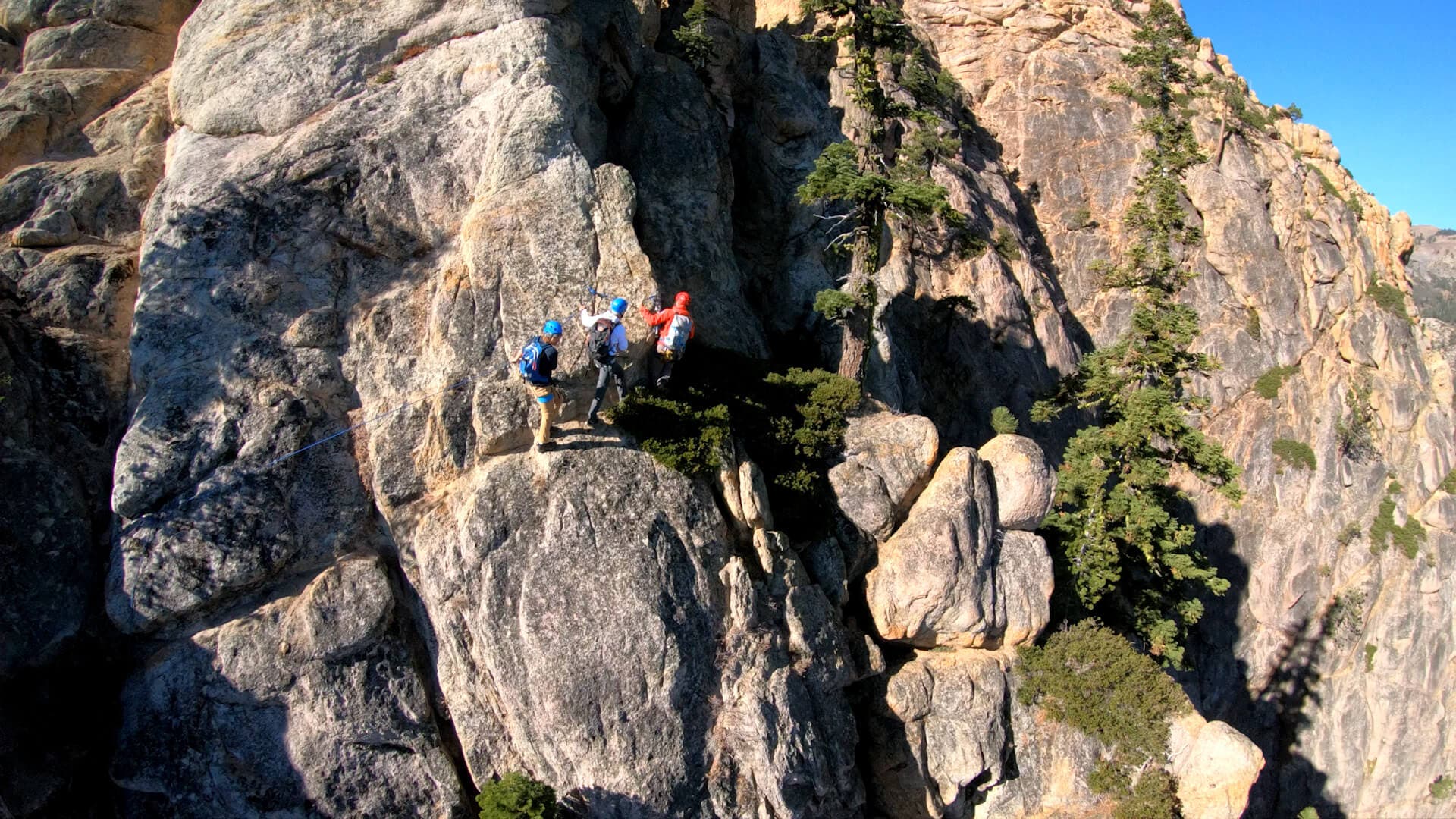
Local guide service Alpenglow Expeditions runs the routes on Palisades Tahoe’s via ferrata, which features four routes that ascend the tram face that towers over the base area. There are four-, three-, and two-hour routes to choose from. The three-hour route, called The Loophole, guides climbers to the Olympic Valley Overlook for unforgettable views out over the valley. But adrenaline junkies should opt for the four-hour Skyline Traverse route, where they’ll have to cross the Super Monkey Bridge—a 50-foot long suspension bridge, with one cable underfoot and one to hold onto. Do not look down.
Book an adventure or get more info here.
Via Ferrata 2.0, Jackson Hole Mountain Resort, Wyo.
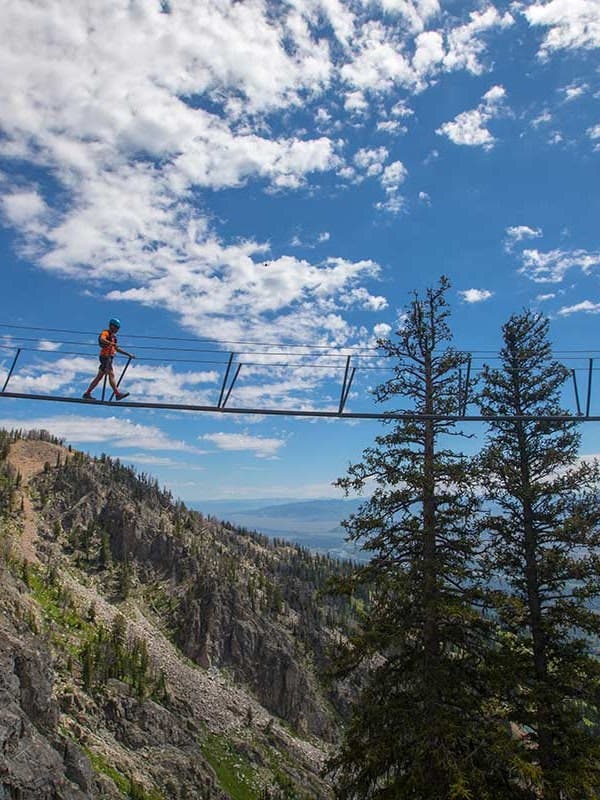
Jackson Hole’s via ferrata consists of 17 routes of varying levels of difficulty, including two recently added routes in Casper Bowl. The longest route is over 500 vertical feet, but there are shorter ones ideal for half-day adventures. All routes require crossing a 120-foot suspension bridge, so come prepared for that experience. The Crystal Cave route is one of the most challenging; it’s super exposed and requires scaling a vertical grotto. There are less terrifying ascents, too, like The Good, The Bad, and The Ugly, three intro routes that comprise The Gateway area and are great for getting used to the equipment and the surroundings.
Find more details here.
Telluride Via Ferrata, Colo.
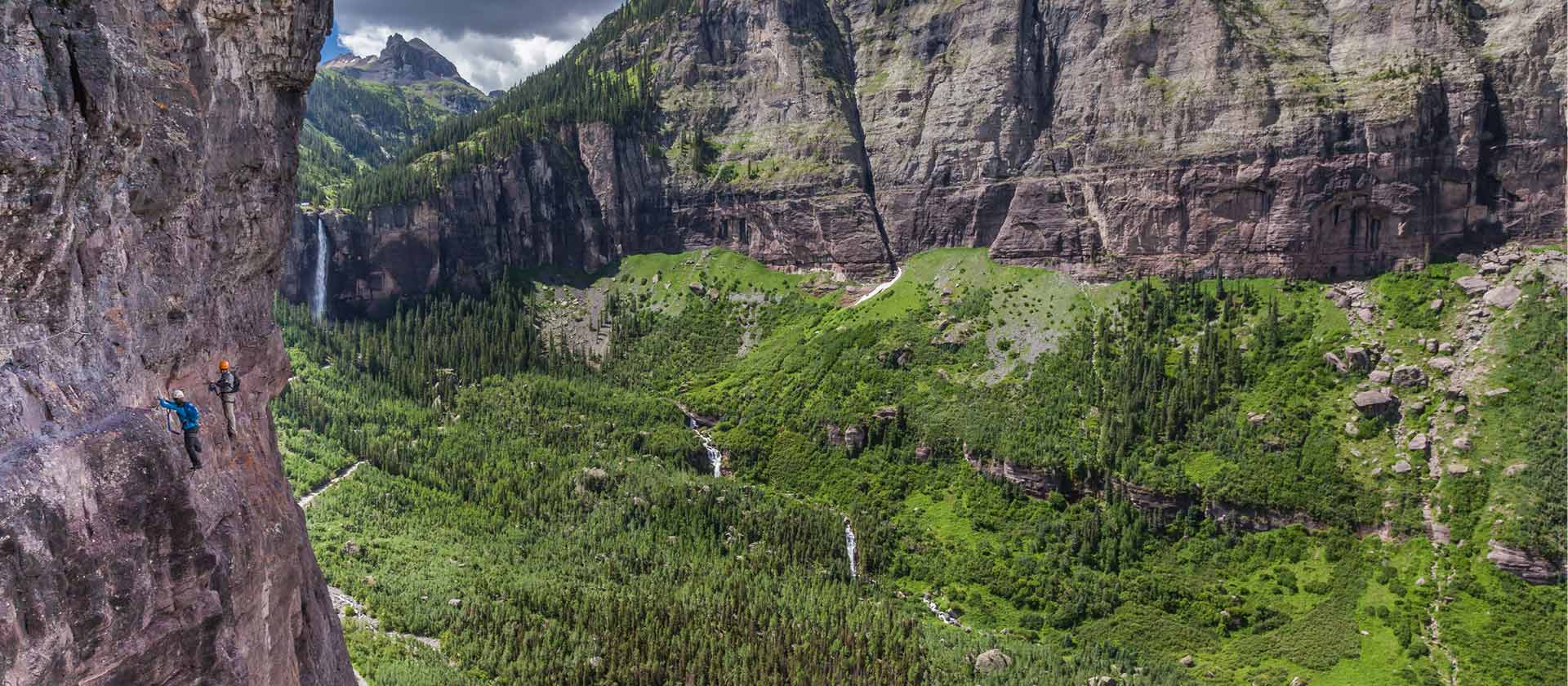
If you’ve wanted to view Bridal Falls while clinging to a rock face high off the ground, now’s your chance. Telluride’s via ferrata, installed by local iron worker Chuck Kroger, is connected by steel cables and iron rungs installed precariously along high-alpine cliffs. It’s a challenging course that’s very exposed in parts, and one best attempted with a guide. Both Mountain Trip and Telluride Mountain Guides offer outings that include all the safety equipment and guidance to make it safely across.
More info and specifics here.
Taos Ski Valley Via Ferrata, N.M.
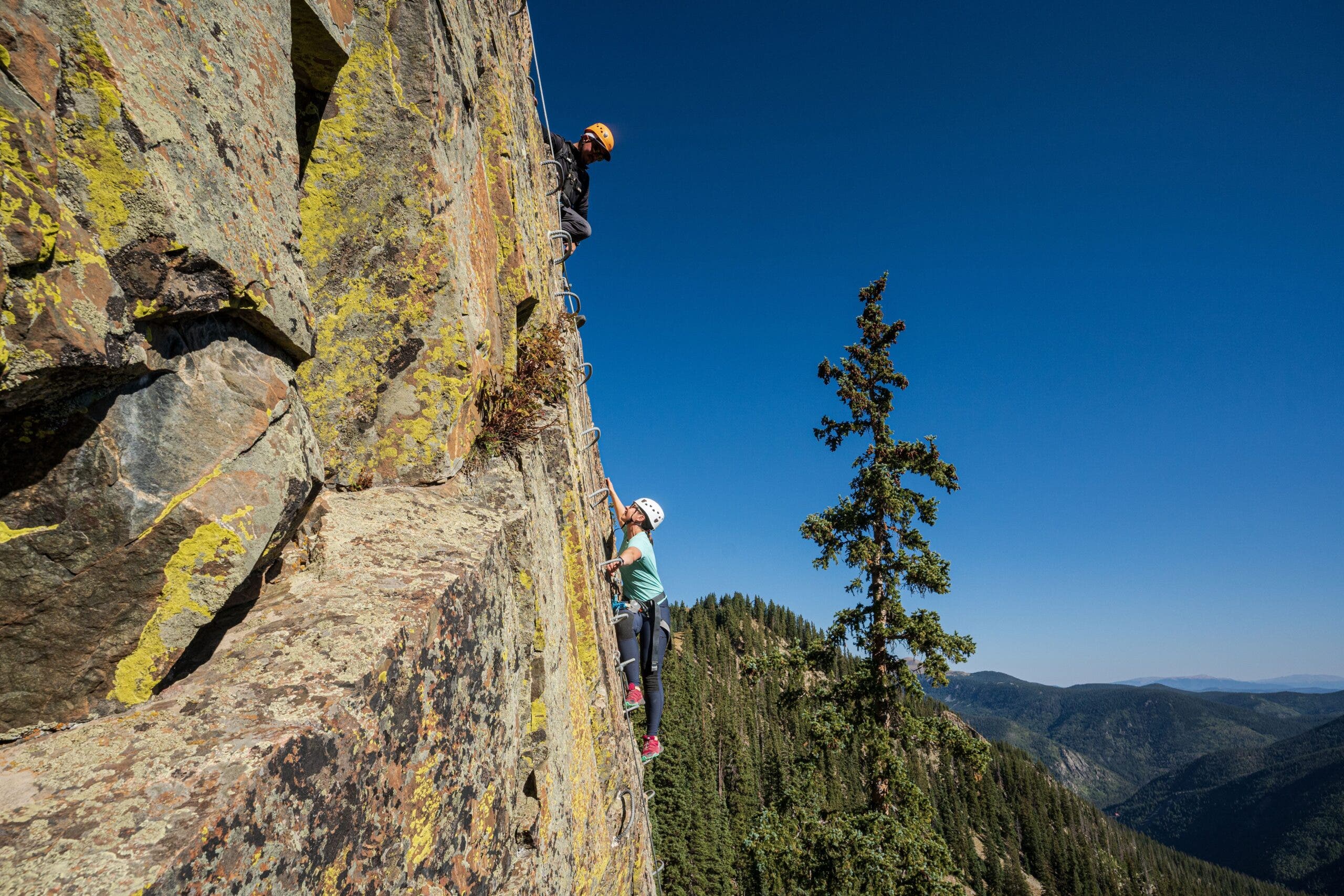
Taos’ via ferrata laces through the sub-alpine at 11,500 feet on Kachina Peak. It offers beginner through advanced options along its two routes, including a chance for first-timers to cross the majestic 100-foot-long Sangre de Cristo Skybridge, which spans 50 feet above the valley floor. On the K Chutes advanced route, climbers traverse a 30-foot-long double-cable catwalk and get the chance to skitter across some of Kachina’s steepest faces.
Click here for more info.
Arapahoe Basin Via Ferrata, Colo.
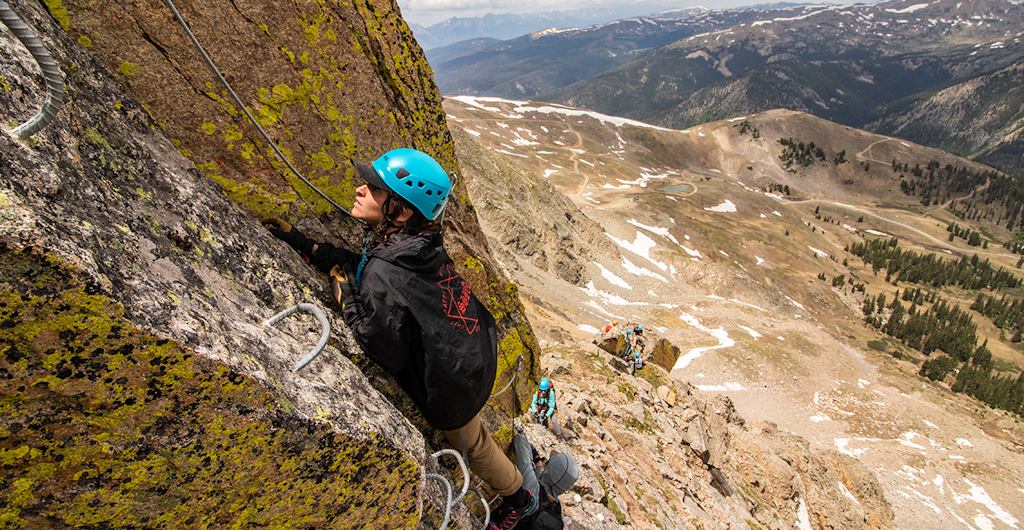
Ski country’s highest-elevation via ferrata opened a few summers ago at A-Basin. It scales the ski area’s near-vertical East Wall, the legendary in-bounds hike-to ski terrain the resort is known for. (Skiers who know the East Wall will recognize the via ferrata location between the North Pole and Willy’s Wide chutes.) There are two route options—a half-day tour that ascends to an abandoned mine, and a full-day climb that summits a 13,000-foot peak. The summit excursion is a demanding adventure suited for climbers in very good shape, while the half-day experience to the mine is less intense and includes relevant history about the area. Choose wisely.
Read more about the newest via ferrata here.
Mammoth Mountain Via Ferrata, Calif.
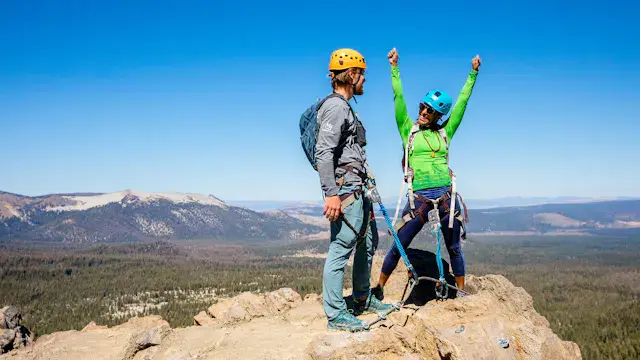
With 6 routes on offer—three easy, two moderate, one difficult—Mammoth’s via ferrata offers the most varied experience of all of the ski-areas listed. Set along the rock face and cliffs below the Caldera Overlook, the routes have different intensity levels. Face Time’s mellow ascent offers a chance to get used to the equipment and acclimate to the elevation while the Nose is inspired by the portions of the legendary El Capitan climb of the same name. No matter which you opt for, you’ll get the same spectacular views out over the surrounding peaks and all the way to Mono Lake.
More info and specifics here.
More Summer Coverage From SKI
6 Ski Resort Weekends to Escape the Summer Heat
Get All of the Views With Little of the Work on These 5 Scenic Lift-Served Hikes
9 Ski Brands That Make Great Summer Gear, Too